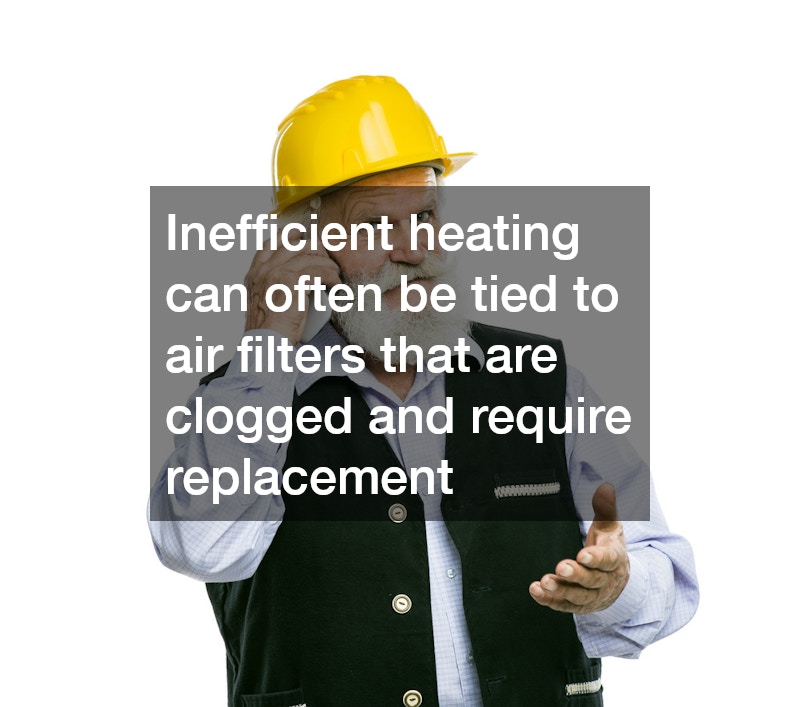
Your home’s furnace is an essential component for maintaining comfort during the colder months. Neglecting its maintenance can result in decreased efficiency, higher energy bills, and unexpected breakdowns. This article will guide you through recognizing the signs when it’s time to call for professional furnace repair.
1. Unusual Noises Coming from the Furnace
Noises such as banging, screeching, or clanking are often the first indication that there’s a problem with your furnace. A well-functioning furnace should operate quietly, making only whooshing or humming sounds.
If you notice loud or unusual noises, it might signify loose or damaged components, such as belts or fan blades. These could also indicate issues with the blower motor or ignition system. It’s crucial to address these noises promptly to prevent further damage and ensure safety.
A squealing sound could be a sign of a malfunction in the blower belt. Over time, belts can become worn and may slip, causing the blower to malfunction. This failure can eventually lead to overheating issues or reduced airflow in your heating system. On the other hand, a grinding noise might indicate that the motor bearings need lubrication or are wearing out. Addressing these issues early with furnace repair can help avoid more costly repairs down the line.
Ignoring such noises can also lead to decreased furnace efficiency and increased energy costs. When your furnace works harder to perform its task due to any malfunction, it consumes more energy and may still fail to reach the desired temperature settings. Professional inspection and repair can identify the root cause of unusual noises and restore your furnace to its optimal condition. Protect your home’s comfort and your wallet by addressing these sounds as soon as they arise.
2. Inconsistent Heating in Different Rooms
If some rooms in your home are noticeably colder than others, it could indicate that your furnace is struggling to distribute heat evenly. Inconsistent heating is often a sign of an underlying problem within your ductwork or the furnace itself. Blocked, leaking, or improperly sized ducts might be at fault, affecting how efficiently warm air reaches different parts of your home. Similarly, an outdated furnace may not be powerful enough to heat your entire home effectively. A professional can diagnose these issues, providing solutions to improve airflow and comfort.
Inefficient heating can often be tied to air filters that are clogged and require replacement. Clogged filters restrict airflow, causing the furnace to work harder and less efficiently. This problem not only affects heating but can also increase energy consumption and costs. Regular maintenance and filter changes are pivotal for performance and efficiency. Remember, what seems like a minor inconvenience now can escalate into a significant issue without timely furnace repair.
It is also helpful to check if your thermostat is functioning correctly. Incorrect temperature readings or setting issues can lead to inconsistent heating. This can result in overworking your furnace and uneven temperatures across different rooms of your home. Testing and, if necessary, recalibrating or replacing your thermostat can resolve potential heating inconsistencies. A professional service will ensure your heating system components are working harmoniously together.
3. Frequent Cycling of the Furnace
Frequent cycling, where your furnace repeatedly turns on and off, can signal several potential problems. Often, this happens due to a malfunctioning thermostat that incorrectly signals the furnace. Another cause might be restricted airflow because of dirty air filters, leading to overheating and continuous cycling. If overlooked, it can accelerate wear and tear on your system, potentially leading to more extensive repairs or replacement. Identifying and resolving why your furnace is cycling frequently is crucial to maintaining efficiency and performance.
In some cases, your furnace could be the wrong size for your home altogether. If too large, it heats your home too quickly and shuts off repeatedly, whereas a small furnace may cycle to meet your home’s heating needs unsuccessfully. Both scenarios lead to frequent cycling and inefficiency, increasing utility costs. Consulting a professional to accurately evaluate your heating needs and recommend the appropriate furnace size is invaluable. Today’s furnaces are more efficient and specifically designed to maximize energy usage and home comfort.
Sometimes, frequent cycling results from electronic issues within the system, such as a faulty control board. This problem can cause erratic furnace behavior and safety concerns if left unchecked. A professional furnace repair service will conduct a comprehensive check to detect and fix these types of electrical problems. Ensuring every component is in perfect working order guarantees a smoother, more reliable heating system operation.
4. Increasing Energy Bills
A sudden spike in your heating bills without a change in usage often indicates furnace inefficiency. As components age or malfunction, the furnace works harder to deliver the same warmth, using more energy in the process. This inefficiency not only costs more in utilities but can also degrade your furnace further, leading to future breakdowns or the need for replacement. Scheduling regular maintenance and repairs can help ensure your system operates at peak efficiency. Not only does this save money, but it also preserves the lifespan of your furnace.
Leaky ductwork is another culprit of higher energy bills. Even if your furnace is functioning correctly, leaks in the ducts can allow heated air to escape before reaching your living spaces. This forces the system to run longer and harder to meet the thermostat’s settings, using more energy. A professional furnace repair technician can inspect your ducts, seal any leaks, and improve overall heating efficiency. This proactive approach helps maintain lower heating costs and increases comfort levels within your home.
Regular maintenance is key to preventing unexpected increases in energy bills. This includes checking and cleaning burners, inspecting electrical connections, and calibrating your thermostat. Simple actions like changing air filters regularly can keep your furnace running more efficiently throughout the year. Furnace repair professionals can offer insights and services that you may overlook, addressing issues before they escalate into more significant problems. Engaging in preventive maintenance helps ensure your furnace performs optimally when you need it the most.
5. Yellow Pilot Light Instead of Blue
Your furnace’s pilot light provides critical information about its operational health. A healthy furnace should have a pilot light that burns blue, indicating the proper mixture of gases required for efficient operation. When the pilot light shifts to yellow, it suggests an imbalance in gas and air, often due to a dirty burner or improper ventilation. This imbalance can lead to carbon monoxide buildup, posing severe safety risks to occupants. Mustard-colored light might also be indicative of a more significant issue requiring professional furnace repair intervention.
Yellow or flickering pilot lights may also be caused by draft interference or problems with the thermocouple. The thermocouple is a safety device that shuts off gas flow if the pilot light extinguishes unexpectedly. Should this component be malfunctioning, it compromises your furnace’s ability to operate safely and efficiently. Restoring the pilot light to its proper blue hue typically involves cleaning key components and potentially replacing parts like the thermocouple. A professional service call will ascertain the root cause and implement necessary repairs.
Addressing pilot light problems expeditiously can prevent larger, expensive repairs down the line and increase overall furnace efficiency. This quick response supports home safety, given the risk associated with combustion byproducts like carbon monoxide. Professionals not only fix the immediate issue but also conduct a full-system inspection to ensure similar problems don’t recur. They have the expertise, tools, and knowledge to diagnose and correct pilot light and other gas-related issues expertly. Ensuring a blue pilot light is a simple yet essential step in maintaining a healthy, safe, and efficient furnace system.

